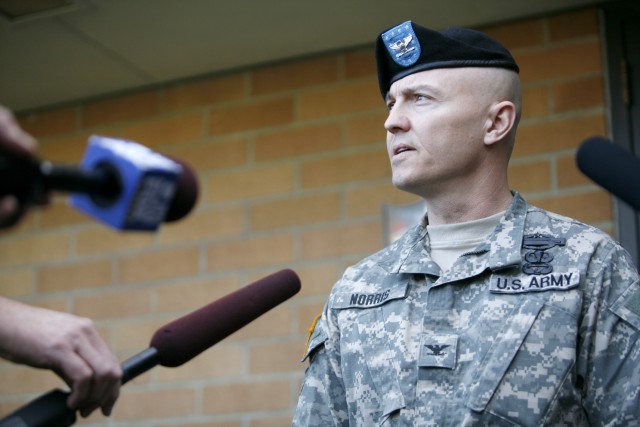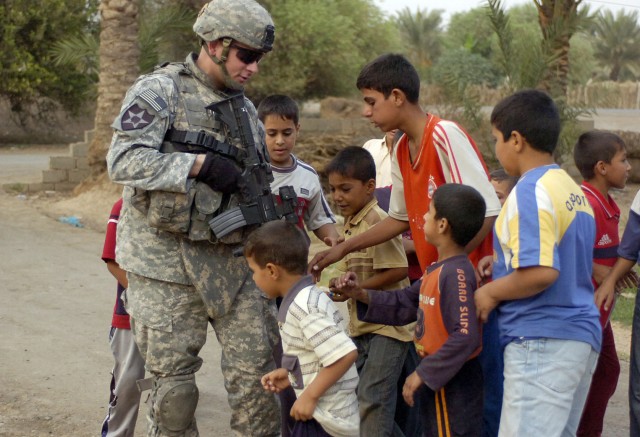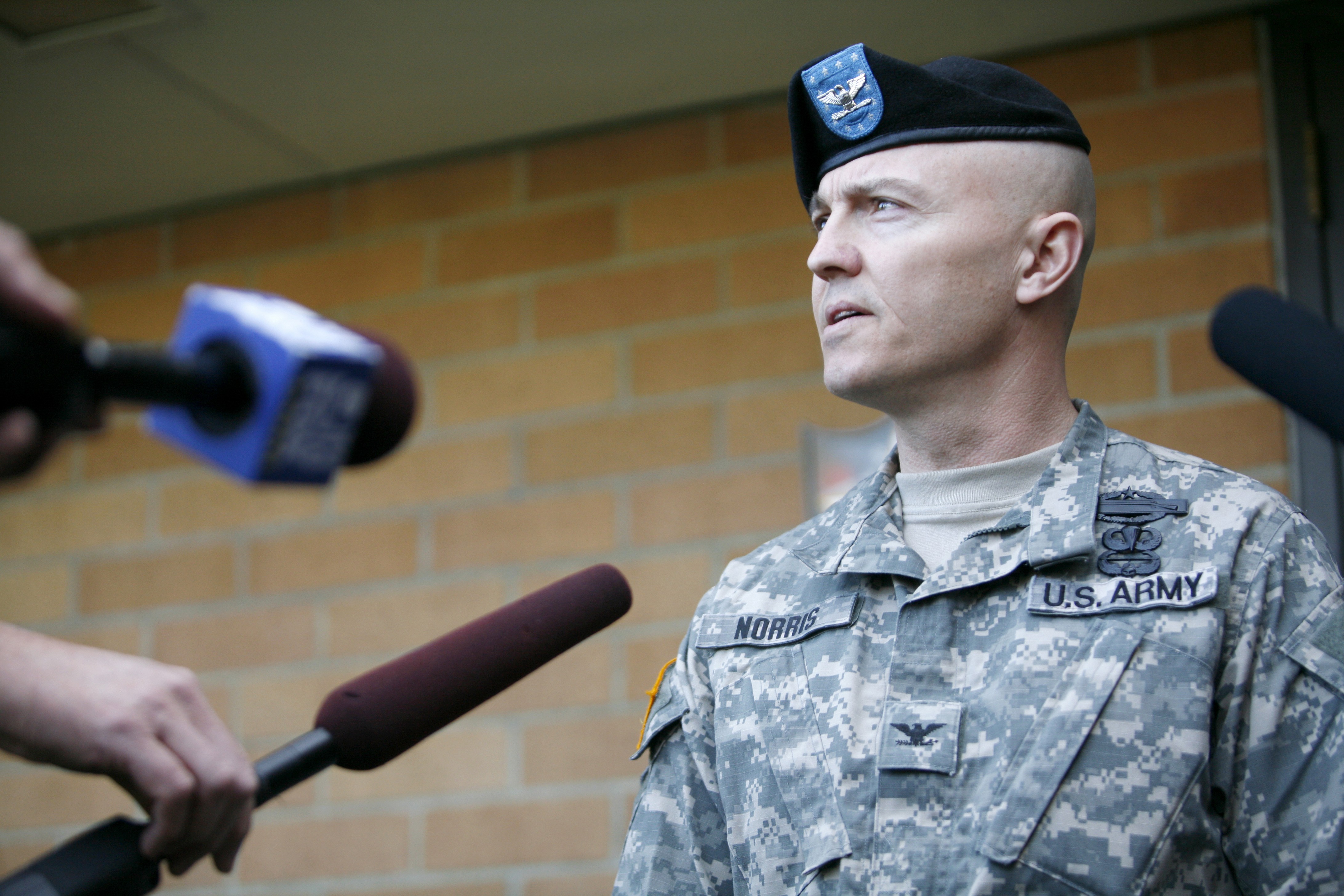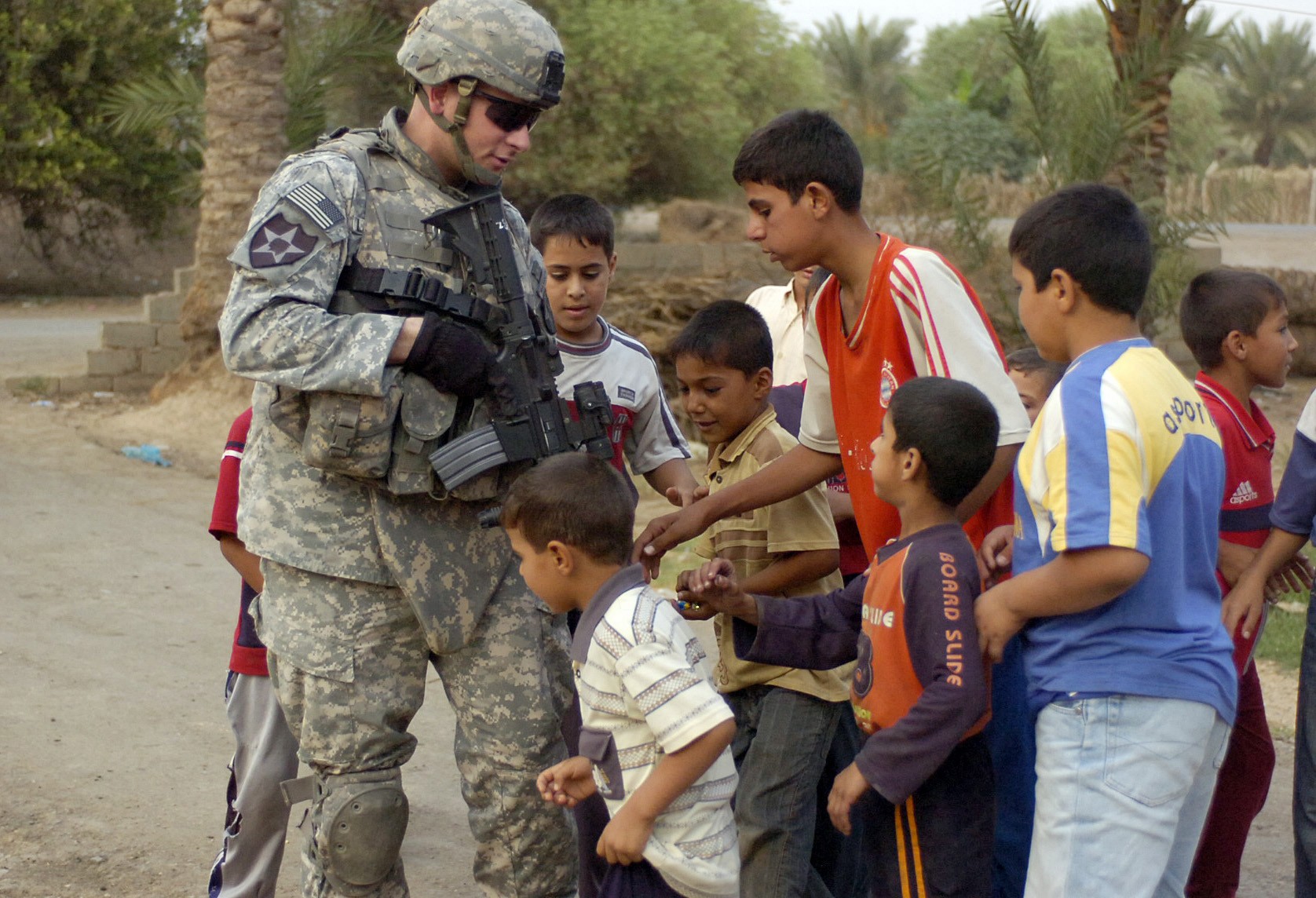FORT LEWIS, Wash. - The Defense Department announced Monday that the 4th Brigade, 2nd Infantry Division will return to Iraq in the early autumn.
The Raider Brigade deployed for the first time to Operation Iraqi Freedom in April 2007 and returned to Fort Lewis June 2008 after serving in Baghdad and surrounding provinces.
Pentagon spokesman Bryan Whitman told reporters the brigade was identified to deploy as part of a "regularly scheduled rotation of forces" to the combat theater. However, the timing of the deployment had been pushed forward as much as six months.
The change in the 4th Bde., 2nd Inf. Div. deployment schedule was precipitated by the diversion of a sister Fort Lewis Stryker brigade to Afghanistan.
Leaders and Soldiers of the 5th Brigade, 2nd Infantry Division learned as they departed for the National Training Center at Fort Irwin, Calif., last month for their brigade mission readiness exercise that their mission had shifted from Iraq to Afghanistan.
Whitman said 4th Bde., 2nd Inf. Div. will serve a 12-month tour in Iraq.
Colonel John G. Norris, at a press briefing Tuesday in front of his brigade headquarters, said Army planners had considered the deployment dates carefully to ensure that Soldiers would spend at least the same time at home with their families as they had served in theater.
"We will not deploy any Soldier in this brigade combat team prior to a one-for-one dwell of 14 months," Norris said. "We were anticipating a 20-month dwell time back here in the states to prepare and train for combat, but with the early deployment we'll be deploying (the first elements of the brigade) on our anniversary, which is 14 months."
No strangers to accelerated deployment schedules, 4th Bde., 2nd Inf. Div. Soldiers went to Iraq a month early in 2007 as part of President George W. Bush's troop surge. The Raiders tasted combat as soon as they arrived in April; elements of the brigade moved to Diyala Province northwest of Baghdad in June, in time to take part in initial surge combat operations.
Just as in 2007, the schedule modification will require a change in the date and location of the brigade MRX, shifting from its original 2010 date at the National Training Center at Fort Irwin, Calif., to this summer at the Joint Readiness Training Center at Fort Polk, La.
Before its last Iraq mission, the Raiders conducted their MRX on Fort Lewis, with JRTC officers and NCOs coming to post in January 2007. I Corps, JRTC and brigade planners shifted focus from NTC to Fort Lewis, transforming it into a notional Baghdad. Raider elements conducted urban operations at multiple locations throughout the installation.
The brigade completed its reset phase in January, during which it received weapons, equipment and personnel. Raider battalions are currently in the individual-training phase of their preparations.
Though Monday's announcement was earlier than expected, it was no surprise, the commander said.
"We're pretty excited," Norris said. "As brigade commander I will tell you I have the privilege of commanding the best Stryker brigade combat team in the U.S. Army. I'm privileged to command over 4,100 Soldiers and more than 300 Stryker vehicles. And most importantly, of the brigade that came back this past June, we have more than 2,500 Operation Iraqi Freedom veterans in our ranks today.
"Two thousand of those veterans served with this brigade combat team on the last mission," he said. "So we have an incredible talent pool we can resource to help us with the training to insure we will be ready as expected and required by our nation ... Those are not just Soldiers. Those are leaders, from sergeant all the way to colonel. Our six battalion command teams, all of those battalion commanders and command sergeants major have Stryker experience."
The experience goes even higher, all the way to the top of the organization and its senior NCO.
As a lieutenant colonel, Norris activated the 4th Battalion, 23rd Infantry Battalion in 2003, which belonged at the time to the 172nd Infantry Brigade at Fort Richardson, Alaska. He led it to combat in Mosul, Tal Afar and Baghdad during OIF II and III. The brigade's top NCO, Command Sgt. Maj. Jeffrey R. Huggins. served as command sergeant major of 5th Battalion, 20th Infantry Regiment, the 3rd Brigade, 2nd Infantry Division's most decorated battalion during its last deployment. The 5-20 Inf. "Regulars" saw some of the fiercest fighting of OIF in Baqubah and Diyala Province from March through June 2007.
The command team of Norris and Huggins took charge of the brigade Aug. 8, 2008. At the change of command ceremony, the I Corps commanding general paid tribute to the Raiders' contributions to OIF and the global war on terrorism.
"4-2 is already a veteran and storied formation, even at such a young age," said Lt. Gen. Charles H. Jacoby Jr. The Raiders introduced the nation's enemies to the future of land warfare, Jacoby said, redefining counterinsurgency operations through intelligence-driven targeting on a complex battlefield.
"The insurgents feared them for their skill and ferocity," the CG said.
The brigade deployed 22 months ago as the first to go into combat with all 10 Stryker-vehicle variants, including the Mobile Gun System and the NBC Reconnaissance Vehicle. It will deploy again with its full complement of Stryker vehicles, Norris said.
Command Sgt. Maj. John Troxell said the brigade had endured "brutal combat every day" upon its arrival, but by the end of the deployment, the Sons of Iraq, Sunni fighters who worked for the Iraqi Defense Forces, were defending their own neighborhoods against terrorists.
Fourth Brigade Soldiers fought al-Qaida terrorists and Shiite militia members, killing more than 500 enemy fighters, wounding nearly 200 more, finding 440 caches of enemy weapons and equipment, detaining 1,700 suspected insurgents, clearing 2,220 improvised explosive devices and capturing more than 200 high-value targets. After following 3rd Brigade's lead in throwing off insurgent influence in Diyala and the area known as the Breadbasket, 4th Bde., 2nd Inf. Div. took over the area, then handed it off in June 2008 to Iraqi Defense Forces to monitor.
Though not at peace, there was far less insurgent activity and freedom of maneuver in the areas where 4th Brigade conducted operations. Casualties dropped and communities returned to normalcy as a direct result of the efforts and sacrifices of the Raiders.
"There will be a lot of tough work ahead," Norris said, "but we also recognize that we are presented with a tremendous opportunity for our country and Iraq in being able to build on the successes already achieved. We honor all of those who have sacrificed greatly by transitioning (to) a stable Iraq. It is a privilege for the Raiders to be able to accept this mission."
Don Kramer is a reporter with Fort Lewis' Northwest Guardian.






Social Sharing